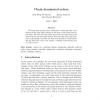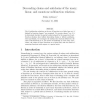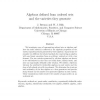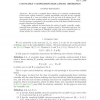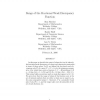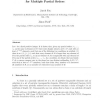ORDER
2006
13 years 9 months ago
2006
We study finite partial orders which have a chain such that every element of the order either belongs to this chain or has all its covers in this chain. We show that such orders a...
ORDER
2006
13 years 9 months ago
2006
The C-subfunction relations on the set of functions on a finite base set A defined by function classes C are examined. For certain clones C on A, it is determined whether the part...
ORDER
2006
13 years 9 months ago
2006
ORDER
2006
13 years 9 months ago
2006
We investigate ways of representing ordered sets as algebras and how the order relation is reflected in the algebraic properties of the variety (equational class) generated by the...
ORDER
2006
13 years 9 months ago
2006
A three-dimensional grid drawing of a graph is a placement of the vertices at distinct points with integer coordinates, such that the straight line segments representing the edges ...
ORDER
2006
13 years 9 months ago
2006
We say that a countable linear ordering L is countably complementable if there exists a linear ordering L, possibly uncountable, such that for any countable linear ordering B, L do...
ORDER
2006
13 years 9 months ago
2006
ORDER
2006
13 years 9 months ago
2006
Let r be a fixed positive integer. It is shown that, given any partial orders >1, . . ., >r on the same n-element set P, there exist disjoint subsets A, B P, each with at l...
